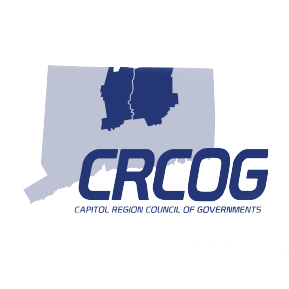Plans and Studies
Capitol Region Bicycle and Pedestrian Priority Network Plan
Study Updates An RFQ seeking qualified Consultants to support CRCOG in this Study was issued on March 22, 2024 and closed April 24, 2024. After the Consultant selection process is…
Read MoreRoundabout Feasibility Study
CRCOG is conducting a Roundabout Feasibility Study throughout the Capitol Region. Objective: At CRCOG, we seek to improve intersection traffic safety across our region. As part of this effort, we’ve…
Read MoreTransit-Oriented Development (TOD) Roles, Visioning, Viability, and Tools Analysis
CRCOG worked with municipalities, the Connecticut Department of Transportation, and other stakeholders to identify roles, assess gaps, and determine future responsibilities related to the implementation of transit-oriented development (TOD) along…
Read MoreFarmington Connectivity Study
CRCOG and the Town of Farmington are conducting a Connectivity Study in the Town of Farmington. Objective: The study will examine the impacts and benefits of a proposed new bridge…
Read MoreRoute 44 Corridor Study, Canton
CRCOG and the Town of Canton are conducting a corridor study of the Route 44, in the Town of Canton. The purpose of the study is to: investigate…
Read MoreTown of Bloomfield, ECG Study
This page is dedicated to the efforts specific to the Town of Bloomfield as part of the Capitol Region East Coast Greenway Study. Here you can find information, flyers, and…
Read MoreCity of Hartford, ECG Study
Griffin Line Rail-with-Trail Feasibility Study Memo Appendix Full Report This page is dedicated to the efforts specific to the City of Hartford as part of the Capitol Region East Coast…
Read MoreTown of East Hartford, ECG Study
This page is dedicated to the efforts specific to the Town of East Hartford as part of the Capitol Region East Coast Greenway Study. Here you can find information, flyers,…
Read MoreTown of Simsbury, ECG Study
This page is dedicated to the efforts specific to the Town of Simsbury as part of the Capitol Region East Coast Greenway Study. Here you can find information, flyers, and…
Read MoreRoute 20 Transportation System and Land Use Study
———————————————————————————————- New Route 20 Transportation and Land Use Study Final Report Route 20 Transportation and Land Use Study Executive Summary Route 20 Transportation and Land Use Study Final Report Technical…
Read More

